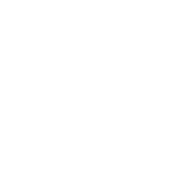 |
 |
 |

|
An inspirational and understandable exploration of the creative potential of 3D printing that introduces outstanding projects, key experts, and the newest technologies.
Editors: C. Warnier, D. Verbruggen/Unfold, S. Ehmann, R. Klanten
Release Date: April 2014
Format: 24 × 28 cm
Features: 256 pages, full colour, hardcover
Language: English, German edition
ISBN: 978-3-89955-516-5
Catalogue Price: €39.90 / $60.00 / £36.99
Die Gestalten Verlag GmbH & Co. KG
Mariannenstrasse 9−10
D-Berlin 10999
www.gestalten.com
|
|
 |
PRINTING THINGS
-VISIONS AND ESSENTIALS FOR 3D PRINTING
Claire Warnier and Dries Verbruggen
Printing Things / Dinge drucken
Designers, trend scouts, scientists, and companies all agree: the golden age of 3D printing has now begun. Today, 3D objects and complex forms can already be printed out that were previously impossible to achieve with traditional methods.
Printing Things is an inspirational and understandable exploration of the creative potential of 3D printing. The book not only introduces pioneering projects, key experts, and the newest technologies, but it also delves into the complex topics that these paradigm-shifting technologies bring up, such as how to handle copyrights and seamless manufacturing.
3D printers will soon be found in more and more workshops, offices, and homes. With these printer we will be able to print out small pieces of furniture, prototypes, replacement parts, and even a new toothbrush on-site at any time. Consequently, new production methods and business models are developing -along with a new visual language of multidimensional formal explorations. Today, 3D objects and complex forms can already be printed out that were previously impossible to achieve with traditional methods.
Printing Things is an inspirational and understandable exploration of the creative potential of 3D printing. The book not only introduces outstanding projects, key experts, and the newest technologies, but it also delves into the complex topics that these paradigm-shifting technologies bring up, such as how to handle copyrights and seamless manufacturing.
Designers, trend scouts, scientists, and companies all agree: the golden age of 3D printing has now begun. In all likelihood, this development represents the largest technical upheaval in manufacturing since the invention of the lathe. 3D printing results in complex three-dimensional objects that are built in layers out of liquids or powder. Given current advancements, 3D printers will soon be found in more and more workshops, offices, and homes. With them, we will be able to print out jewellery, small pieces of furniture, prototypes, replacement parts, or even food at any time. In the near future, if we forget our toothbrush on a trip, we can simply print out a new one in our hotel room.
As these production processes become reality, completely new visual languages and business models must be developed along with them. Forms and constructions that were previously impossible to achieve with traditional methods can already be printed out. Printing Things offers both professionals and interested laypersons an introduction into the paradigm-shifting topic of 3D printing. The book not only provides a useful overview of machines, tools, and processes, but also showcases trendsetting designers and their projects.
Sharing a love of technology and experimentation, a new generation of designers and creative outsiders can hardly wait to explore the potentials and boundaries of 3D printing. The race is on for anyone to come up with the services and products that will best appeal to a mass market with a growing sensibility for design. Against this background, Printing Things is an essential guidebook for today and tomorrow’s cutting-edge design professionals, tinkerers, and companies.
Shortly after Claire Warnier and Dries Verbruggen left the Design Academy Eindhoven in 2002, they founded Unfold as a platform for their multidisciplinary work at the intersection of design, technology, and art. Together, the designers are expanding the possibilities of 3D printing and digital production, as well as defining new distribution channels. Unfold is best known for developing a groundbreaking ceramic printer called L’Artisan Électronique.
|

|
Posted 5 May 2014
|
Share this:
...
|
|
This grand book -so well-made as usual- by publisher Gestalten, is the book to study the technique of 3D printing. Starting in the introduction, Claire Warnier and Dries Verbruggen explain that this book is released because January 28, 2014 marks the seventeenth anniversary of the invention of selective laser sintering, one of the three most common processes in 3D printing. In Chapter 1 the technique is explained in several parts as Processes, Materials and Printers and Personal Printing. Chapter 2 Theory – A Empowerment, authorship, empowerment and open source, The right to Copy? and Interface and Interact with scanning, customization, intangible, interact, and software is described, while Body Topology with 3D scanning, body topology, medical and wearables are explained. With good readable text , pleasant page lay out and photos also The Aesthetics of Complexity with assembly free and complexity are arranged. Finally Building Blocks with architecture and building blocks, the pages on Hacking the Process (with the solar sinter by Markus Kayser) and Crafting New Industries with empowerment, new craftsmanship, new industries and sustainable describe the future of this new craft, who’s future just began.
Chapter 3 -which is the rest of the book- shows in Case Studies with hundred-some designers with one or more pages with good texts and photos. The Appendix gives names and websites of the case studies as from Ted Noten, Eric Klarenbeek, Markus Kayser, Isis van Herpen, Theo Jansen and all the others.
A book we all have to read to know the techniques, materials and futures to recognize form and shapes, possibilities for mould-making and possible applications without limits. Obligatory on all schools and academies.
Waiting now for a book of 3D printing used by artists.
Angela van der Burght
|
|
|
|
|


